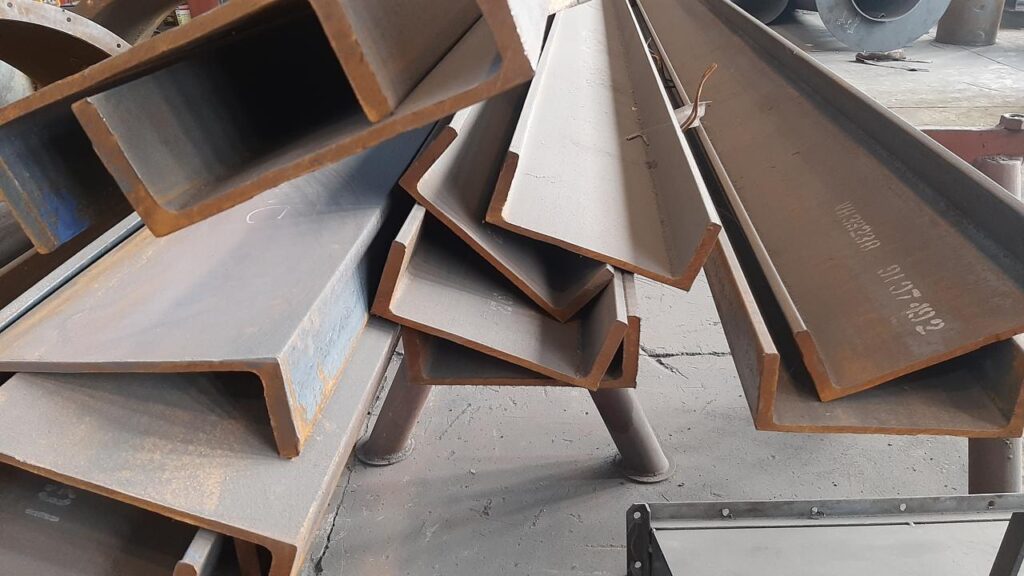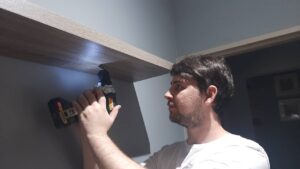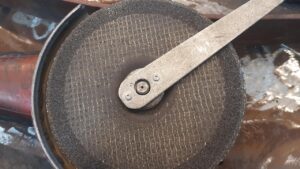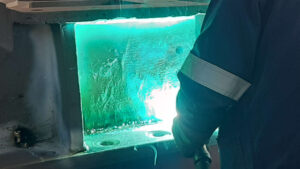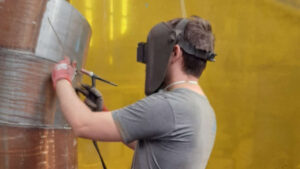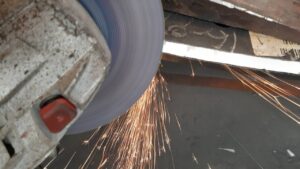There are a lot of different tools you need to do metalwork, but here I cover the essentials that will be the easiest for someone beginner or pro to get for home use. Most of the heavy machines like a bending press or guillotine can be expensive, take up a lot of space, and most likely won’t be used a lot.
Angle grinder
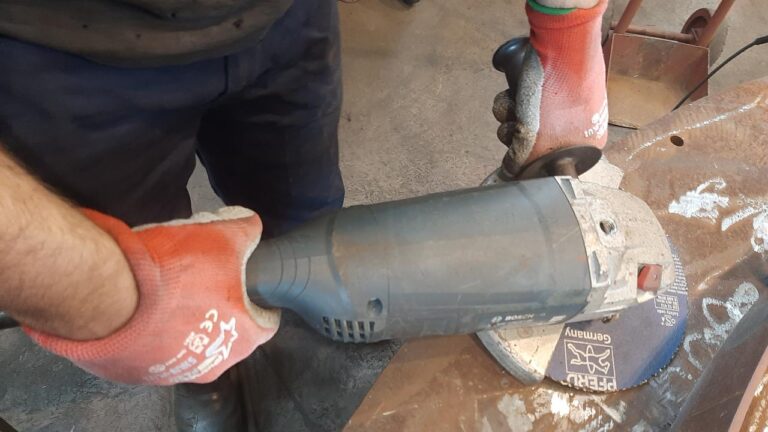
Angle grinders are used to cut, grind and polish most kinds of metals and can be used in almost all situations that involve metalwork. Making them one of the most essential tools that you need to work with metal.
Angle grinders can also be used to cut other materials like wood or concrete. The type of material that you can cut, grind, or polish just depends on what disc you are using.
There are three main types of discs used with an angle grinder in metalwork and they are cutting, grinding, and flap/flapper. Each disc name also states its use except the flapper disc that is used for polishing.
You can also check out my other post on what are angle grinders used for and how to cut different metal profiles with an angle grinder.
Welding machine (any type)
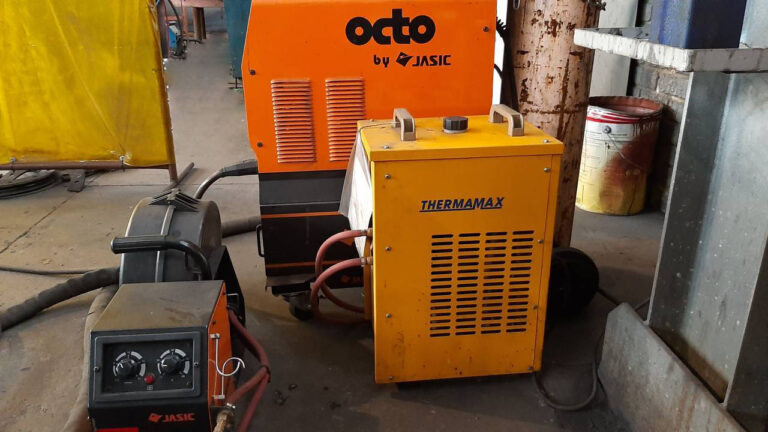
Welding is the process of melting two metals together with or without filler metal. That is why it is important to be able to join two metals together when working with metal. You can also use nuts and bolts or pop-rivets to join two metals, but they aren’t sufficient in most situations and wear out a lot faster than welding.
There are four main types of welding methods MIG, TIG, stick, and flux-core. You can check out my post on the best welding type for home use. A lot of the welding machines you get today can do all four of these welding methods, but when welding aluminum you will need an AC welding machine.
What PPE you need for welding
It goes without saying that you will need the correct PPE when using a welding machine and that includes.
- Welding helmet
- Welding gloves(23inch)
- Overalls
- Apron(optional)
- Neck and head protector
What to look for when buying a welding machine
First of all, you must consider what type of welding you want to do. Then look for the
- Voltage 110v/220v
- Type MIG/TIG/Stick
- AMP 90 and up (higher amp the thicker metal you can weld)
Still, if you are considering getting a welding machine for home use, I recommend checking out my post on the best welding type for home use.
Cutting torch
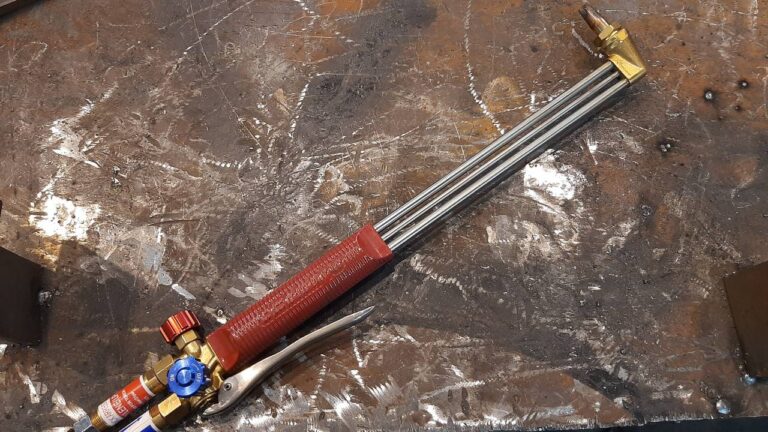
A cutting torch can be used for a lot more than just cutting carbon steel. You can also use it to heat up metal to be able to twist, bend, or straighten.
This can be ideal for home use because you most likely won’t have all the necessary machines that roll, bend or cut metal.
Working with a cutting torch takes time and practice and won’t be easy especially if you have never used a cutting torch before. I recommend reading my post on how to use and set up a cutting torch. Then continue to practice and practice because it takes time to get good at cutting smooth and straight lines.
Bending with a cutting torch
Bending is simple you make a jig and place a piece of a round bar at the point where you want to bend. Fix the end of the workpiece to your workbench and heat up at the point where you want to bend till red hot, depending on the thickness of the material. Slowly push the opposite end down toward you to create the bend. Try not to use excessive heat when bending.
Hammer (pein)
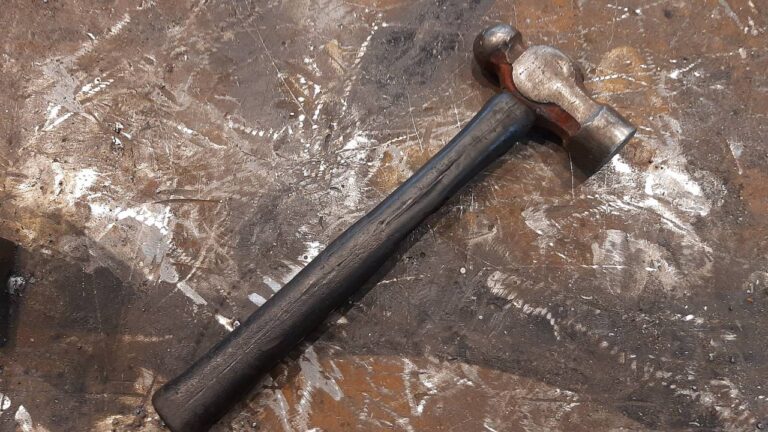
There are two main types of hammers you will need when working with metal and they are a 2-pound hammer or a 4 pound. 2-pound hammer I recommend a ball pein hammer with a rubber handle because you can use the pein to hammer interior corners or to bend a bar.
You will most need a 2-pound hammer to make punch marks for drilling or to stamp markings. Try to avoid using the 2-pound hammer for heavy-duty work, rather reach for the 4-pound hammer when trying to break off a tack or when bending a bar at an angle.
Creating a radius with a hammer
This will only work with a flat bar or a thin square bar. Place the piece you want to bend at a corner or preferably on a piece of channel. Hold the one end and hit the flat bar in between the channel’s toes or in the center of the corner. Don’t use excessive force rather just use light hits. You will start to notice a radius being formed. Continue to hit and move the bar till you have the desired radius.
Measuring tape, engineering chalk, and rule/r
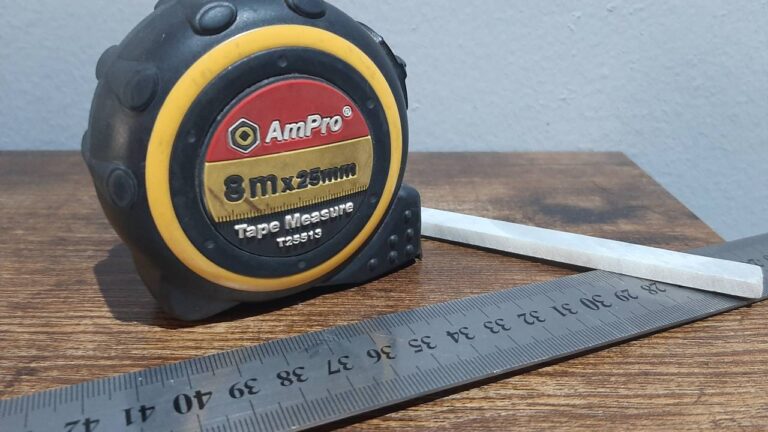
A measuring tape, chalk, and a rule go without saying. They are a must when working with metal because you will need to accurately mark your pieces to get the correct cuts and/or sizes when putting something together. Imagine building something just for it to not fit or be uneven.
Measuring tape
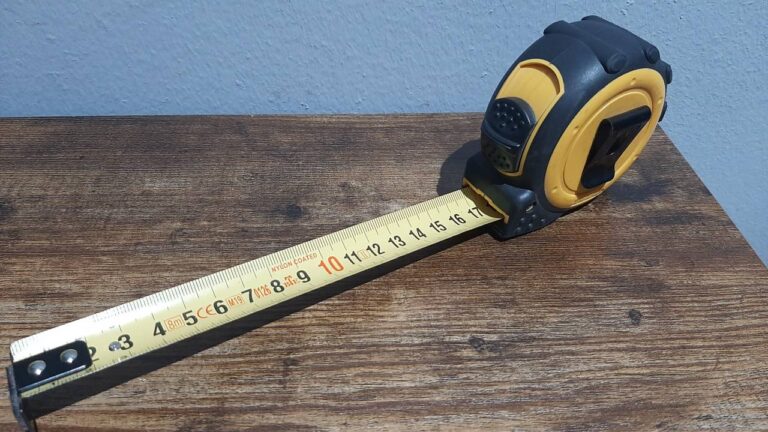
You can use a measuring tape to see that your work is done squared and this is more accurate than any square will be. You check how square your work is by measuring the diagonals of it. They should be the same and the closer the sizes are the more square your work is. Check out my post on measuring tapes to find out more and learn helpful tips.
Engineering chalk
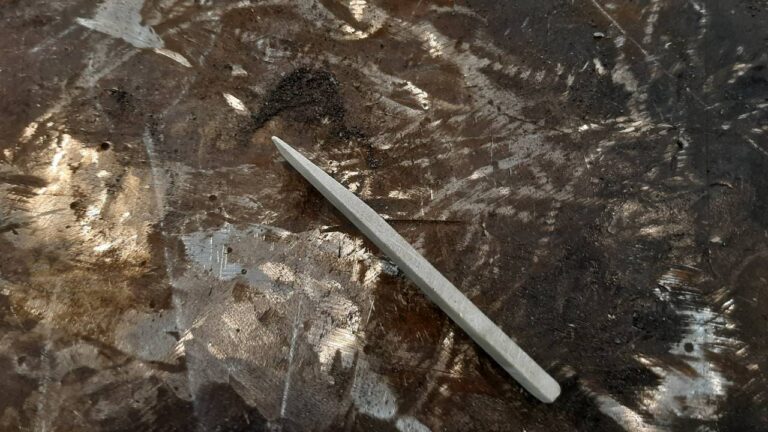
Engineering chalk is flat white hardened chalk that is used to effectively mark onto metals. Try to avoid marking on rusted or painted metals, the chalk tends not to stick to it.
Sharpen the chalk at a relatively sharp angle so it won’t get blunt easily. Also, remember to keep your chalk sharp because blunt chalk will affect the accuracy of your marking work.
Rule/r
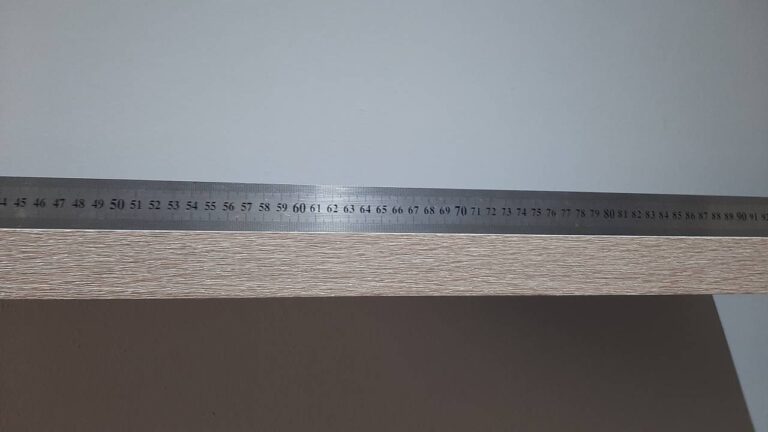
You can also use your rule/r to find how flat something is. You do this by laying it on its side onto the piece you want to check. If the ruler is fine and there’s no gap then the surface is flat like in this picture.
There are three main rulers you will need and that’s a 300mm, 600mm, and a meter ruler. It is also helpful to have a 150mm to 200mm rule/r to check small sizes quickly. They are still mainly used to just make different lengths of lines and you should rather reach for a measuring tape to measure.
Using a tape rather than a ruler will be a lot easier when you start to measure from an edge. Because of the ability to hook it, your measurement will always start from zero.
Electric drill
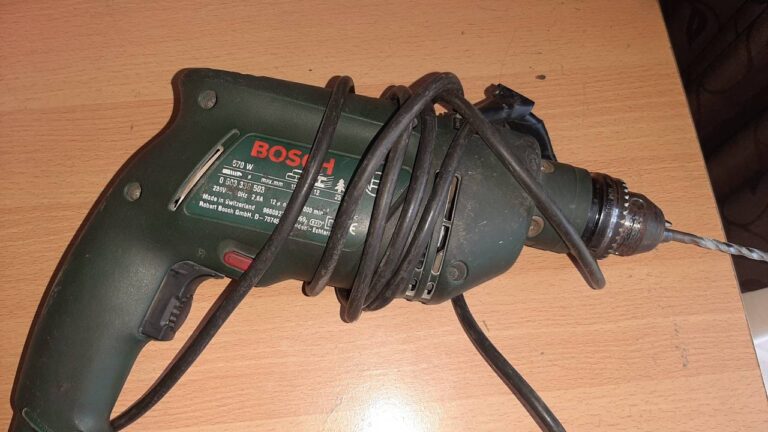
An electric drill isn’t used as often as when you are working with wood, but there’s no substitute for it. When you want to fasten steel together with something other than welding you will need a hole and you will need a drill to make the said hole.
For small holes, you can use a hand drill, but for anything above 10mm I recommend getting a pillar drill. They might be a lot more expensive, but if you have drilled through metal with a hand drill you will wish for a pillar drill. They speed up the drilling process x100 and don’t put nearly as much strain on your wrist.
I did a post on drilling through metal with a hand drill. I recommend checking it out so you don’t ruin your drill bits or get the incorrect drill types.
G-clamps and vices
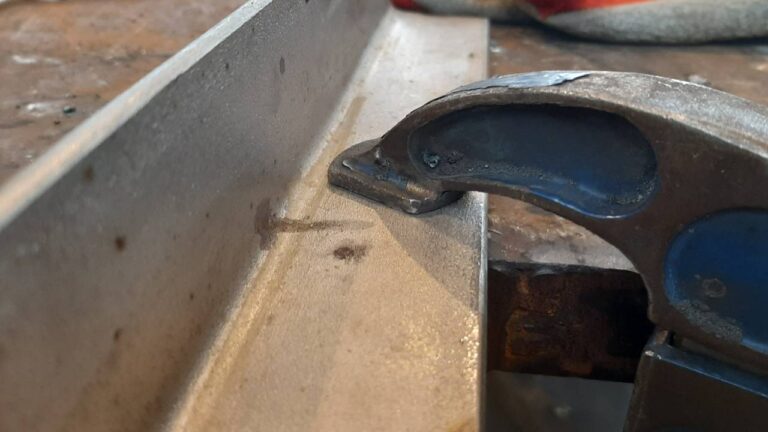
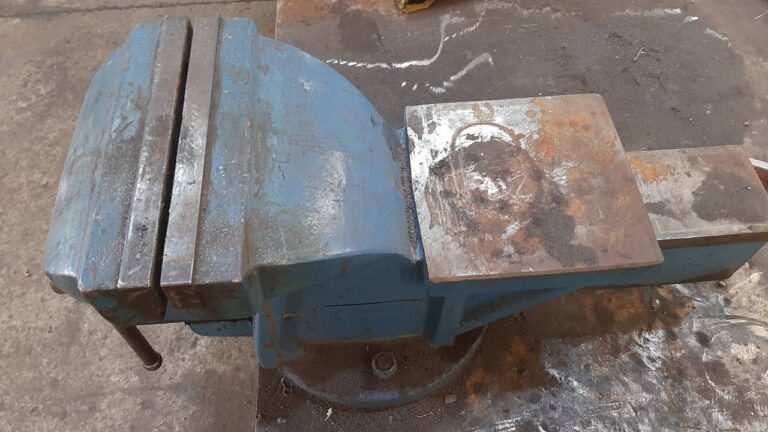
A g-clamp and a vice are used to keep something from moving when you are working with it. G-clamps are great for squared-off surfaces like different bars, tubings, or channels and beams. A vice is great for keeping rounded profiles from moving like pipes or round bars.
You will definitely need clamps when you want to grind or cut smaller items. This is a must because you can easily injure yourself if you try to cut something that is loose or you try to hold it with one and cut with the other.
Paint oxide/ Primer
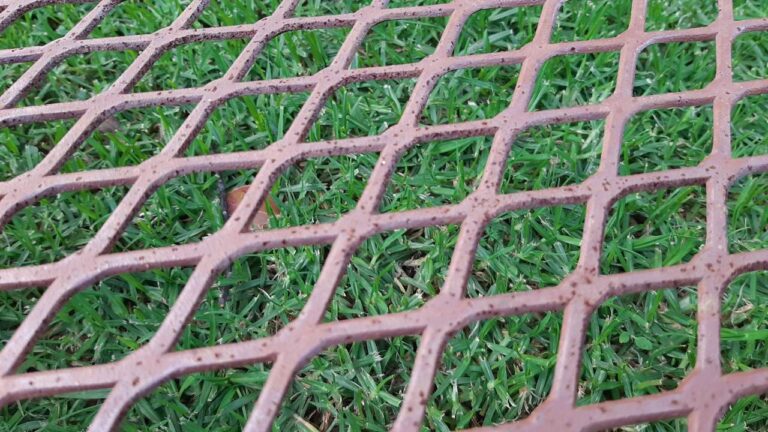
After you are done with your work you will have to protect it from the weather especially if it stays outside. Else you will end up with an extremely rusted piece of metal.
This cage in the image above I made for turtles and have been outside for a couple of years in all kinds of weather. Only light speckles of rust have formed.
The best and cheapest way to protect your work is to apply a layer of oxide paint first. You get oxides in different colors so you might not even need to apply a topcoat.
Another way is to galvanize the piece, but this can be a bit pricey. I recommend getting the color primer you want and giving it a single layer/coat it should be enough.
You can read my post on protecting metal from rust and corrosion if you are interested in learning more.
PPE (Personal protective equipment)
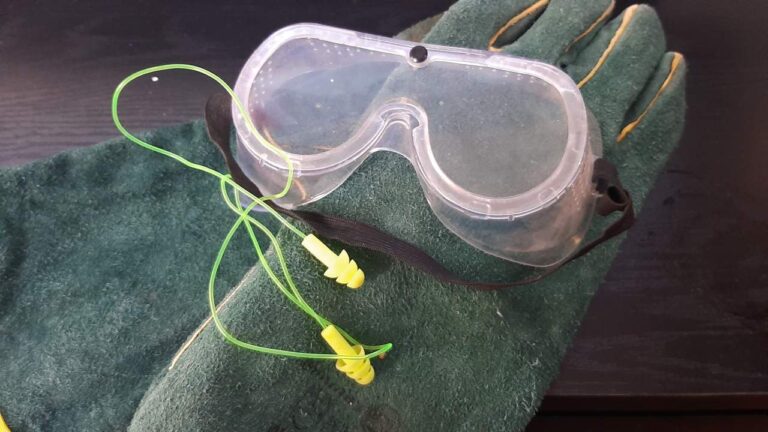
PPE or personal protective equipment should be a priority for you when working with metals. Metal gets hot very easily when using a cutting torch, weld, grind, or even just hitting it with a hammer. Some edges can be sharp after being cut with an angle grinder.
Whenever you work with metal you should wear your PPE that includes.
- Earplugs
- Gloves
- Safety glasses
These are the basic PPE, but when touching warm metal or working close to it you should wear welder’s gloves. They provide good protection from the heat, but you should avoid touching the hot metal for an extended period of time. They will start to heat up and burn your hands.
Please note to never handle the hot metal with wet gloves, the water will steam immediately and can burn you. If you feel a burning sensation then immediately remove the glove because it is the hot glove burning you and not the hot metal.
In the welding section of this post, I cover what PPE you need for welding. Feel free to check there it’s the second item on the list.
I did a full and very detailed post on PPE you need to do metalwork. PPE that you need for metalwork and how to use it
Workbench
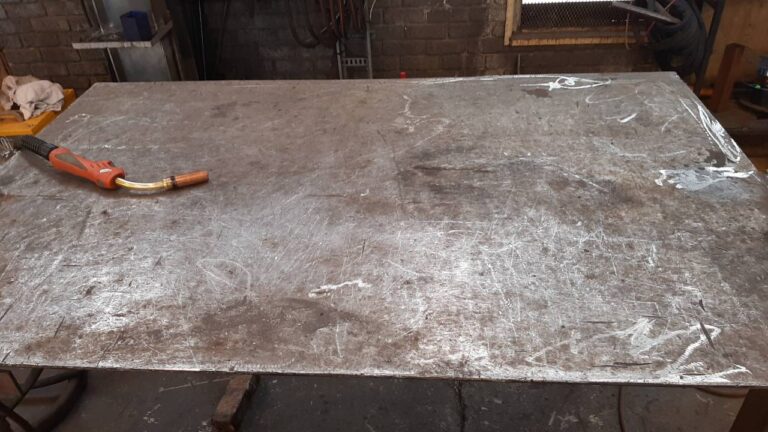
Now that you have all the tools you need you will need an area that is made to work with metal. Similar to how you will create a workbench for wood you can make one use for metal out of mild steel. You will just have to weld it together instead of screwing it together.
Simply buy a sheet of mild steel of the size you want about 3-5mm thick. I recommend it to not be wider than 1.5 meters, but can be as long as you like and the height should be at what’s comfortable for you when standing. If you aren’t sure 800 to 900mm will be fine in most situations. I recommend using about 50x50x3mm square tubing to build a square frame that you can weld onto the sheet.
You will need a metal surface to weld on or do any metalwork on because the heat of the welding will burn or damage any wooden table. Also, don’t use a metal sheet with a wooden frame because the frame will get damaged or burnt very quickly.
The metal table top can be used to tack on all sorts of jigs that can help you create works that require symmetry or when you want to make a lot of one item. After you are done you can just remove the jig by hitting off the tacked pieces and grinding the tabletop clean.
Honorable mentions
These are two machines that are a bit more advance and will be needed if you are looking to bend pipes or roll plates. They are not a necessity, especially if you are just starting out or looking to build smaller times.
When you are comfortable with what you have and looking to expand your collection of equipment these two are definitely what you need next.
Slip roller/ Rolling machine
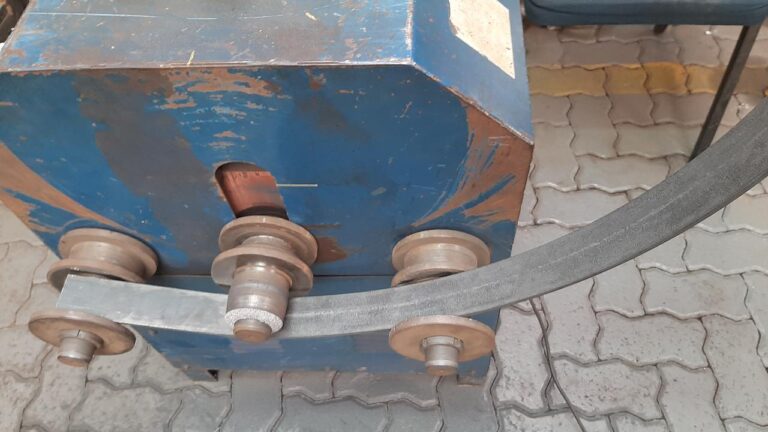
A slip roller is a machine that has three rollers placed in a triangular shape. They are mainly used to roll flat profiles like plate or flat bar but can be used to roll small round or square bars.
This is achieved by rolling the piece from one side to the other repeatedly and pressing down the top roller slightly with each roll.
Pipe bender
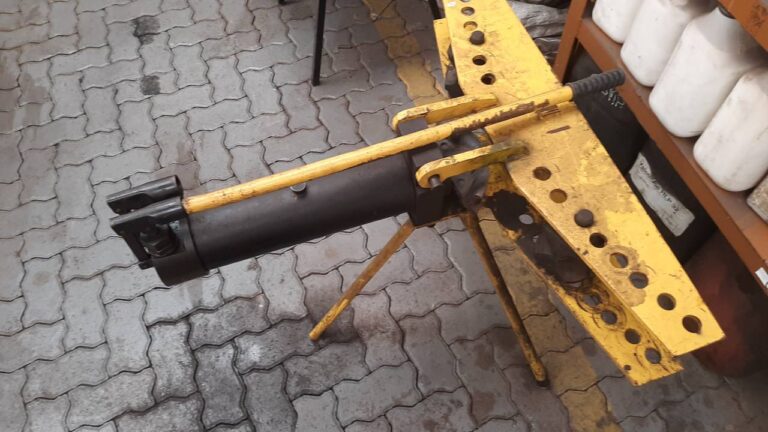
A pipe bender does exactly what it says, it is used to bend pipes at different angles. There are two types, one that uses a lever and the other one that uses a hydraulic to bend the pipes.
I recommend the hydraulic pipe bender because it is a lot less strain on you to bend a pipe and you will most likely be able to bend a larger variety of pipes with it.
Conclusion
In conclusion, there are a lot fewer tools you need when working with metal than working with wood. The major difference is that some of the equipment can be a lot more expensive. For example, MIG welding is the best welding type in my opinion but can be very expensive to start even if you go for cheaper equipment. Feel free to visit my post on tools that you need around your home.

